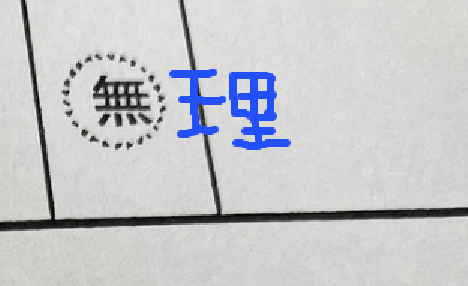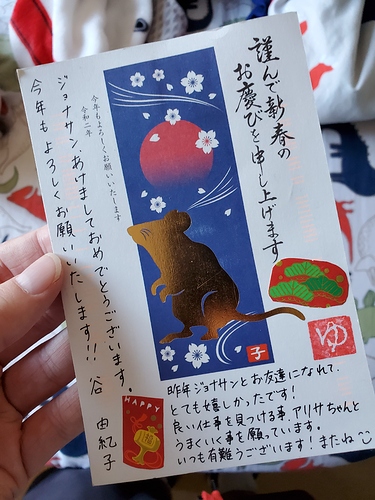This is a bit specialist, but it’s a problem I encounter semi-regularly, so I assume there are plenty more of you who come across it too.
Ensuring there isn’t any sensitive information, post notes from your colleagues (or anyone!) here and let’s try to make out what they say together.
A note from one of my most lovely colleagues who’s always helping me out with lots of things, but I often get little notes from her that I can’t really read 
This is what I see:

I see your name and よろしく(お)ねがいします at the end and something いてくださいます in the middle. Perhaps a name? Are you a teacher?
Letters and written work is so defeating. Even if it’s a nice letter, it’s depressing.
マシュー先生
◯先生がいてくださいます。
よろしくおねがいします。
(◯-sensei will be there for you/us, from くださる, the honorific version of くれる)
I thought for a second that the name was 太陽 (read as ひかり), but it’s not 太 and the second kanji’s components don’t line up either. I assume you know this person, though 
Edit: Looking more closely at the first kanji, the 、mark doesn’t look like an intentional stroke at all; seems like the writer just hadn’t picked up the pen before moving to the next stroke of 大 (and wasn’t actually writing 犬). I think @Beghaus is right, that it’s 大塚先生
Looks like 大塚 to me
your name 先生とっても楽しいスキーツアー ??
また行きましょう。
arrow + ??? 携帯番号です。
your name の携帯番号も教えて下さい。
???
@s1212z yeah I’m a teacher.
@Kai Thanks. I’m pretty sure it’s 大塚先生 but she makes her 先 look quite a lot like a む so the layout confused me 
@Beghaus Yeah I think you’ve got that spot on.
My friend sent me a 年賀状 and I was actually kinda surprised how easy it was to read. I was expecting to have to ask her to tell me what it said. wwww
Although I haven’t tried to figuire out what it says in the top right.
That’s a gorgeous 年賀状 - This year I sent out about 40 but only got about 4 back 
謹んで is something to do with being humble. Personally, I’ve never seen that kanji other than in a New Year greeting, although that might just be me. Honestly I don’t know what the second word with 春 in it means - it’s the first time I’ve ever seen that kanji.
お慶び申し上げます - 慶ぶ is an alternative way of writing 喜ぶ - I would assume this is in a traditional sense like in 年賀状 etc. but it’s not something I’ve ever read about so don’t take that as definite. So yeah it means something like extending joy to you…
Actually… does it say 新春?
I could see that. So the whole thing would add up to something like, “I humbly send you New Years happiness.” or the like.
Yeah I’d say that sounds about right
I don’t know how you guys are able to see ‘先生’ in your letter. Looked like your colleague wrote no more than one or two strokes for those characters 
This is why stroke order is so important, because so many Japanese people don’t lift the pen off the paper at any point whilst writing a character, so you need to understand the direction in which the pen was moving to make out the kanji. I’m not going to pretend that if I saw that 先 that my colleague wrote on its own, I would be able to read it, because I definitely wouldn’t, but sometimes, even if the character looks totally different, you can make it out from knowing the stroke order.
if you care about reading illegible handwriting, that is
Pretty much any Japanese persons handwriting then lol
Yeah if you have colleagues who want to give you messages, as above. Or if you want them to be able to read your handwriting if you have to scribble down a note in a rush.
Here’s my best guess but I don’t really get it. Does it fit any context?
Maybe some like “I was able to assume a good half-way point?”
良い点半々を採ることができました。





